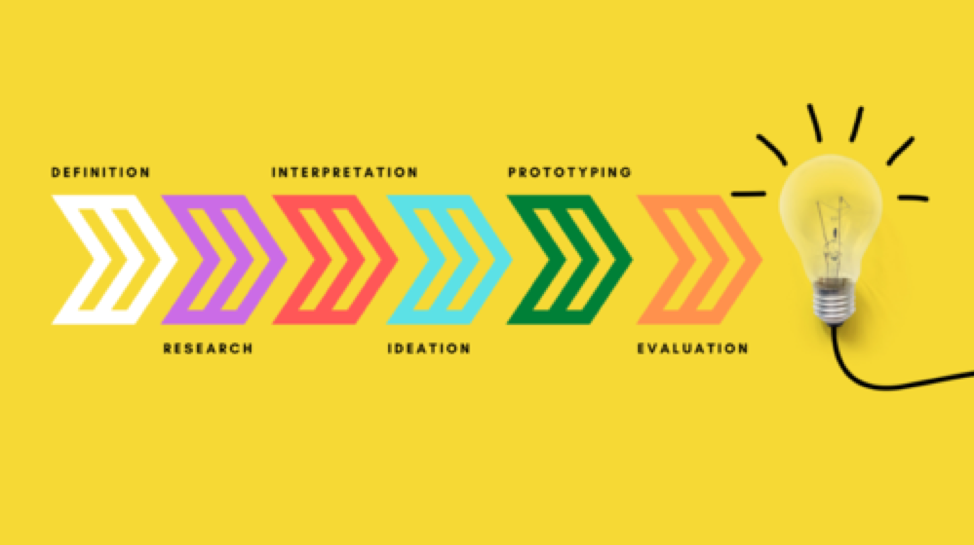Editor’s Note: The DBizInstitute is excited to share this article, written by Dr. Setrag Khoshafian, with our community and in advance of his new book release. Keep an eye on our website as we share additional articles in the coming months written by Setrag, as well as a pending Meet the Author webcast to discuss his new book ‘How to Alleviate Digital Transformation Debt’ expected to air Fall 2021. This article was originally published on CognitiveWorld.com on November 1, 2020.
This article is the sixth installment in a ten-part series on Digital Transformation Debt, post-Covid-19. Part 1 focused on Culture, while Part 2 delved deeper into Operational Excellence and inter-enterprise Value Streams As A Service (VSaaS). Part 3 explained the spectrum of Automation and the shifts post-Covid-19, and Part 4 demonstrated how a new harvest of Low Code/No Code platforms is empowering Citizen Developers. Part 5 highlighted the emerging trend of tools and best practices for Citizen Data Scientists.
This article, Part 6, will focus on pragmatic innovation, primarily through the increasingly popular Design Thinking Methodology leveraging digital technologies for innovation. Design Thinking can be leveraged both by startups for faster and more successful Minimum Viable Products or incumbent enterprises on their transformation journeys. Design Thinking Methodology, as described here, incorporates the Design Sprint followed by Minimum Viable Product (MVP) development using Low Code/No Code platforms.
The post-Covid-19 Mandate for Innovation
The Covid-19 pandemic lockdown and shutdown of businesses and governments is a mega-event, and more importantly, it is causing mega-cultural-trends that will change us for many decades to come. The crisis has forced us to re-think and re-align 2020 challenges and trends in the post-Covid-19 era.
The Covid-19 pandemic is also a Black Swan event par excellence – even though some dispute this characterization. More importantly, the author of Black Swan – Nassim Nicholas Taleb- has another equally compelling perspective in Antifragile – Things That Gain from Disorder. Here is what he says on anti-fragility that is so relevant:
“Entrepreneurship is a risky and heroic activity, necessary for growth or even the mere survival of the economy.”
This is spot on.
Covid-19 accentuates acceleration in experimenting, deploying, or abandoning old organizational structures with bold, innovative alternative cultures and solutions at all organization levels.
Mindsets need to be changed, and innovation needs to become the prevailing epitome for all organizations, for both startups and established enterprises.
Even back in 2019, this MIT Sloan & Deloitte article drove home the cultural challenges: “The history of technological advance in business is littered with examples of companies focusing on technologies without investing in organizational capabilities that ensure their impact. In many companies, (failures are) classic examples of expectations falling short because organizations didn’t change mindsets and processes or build cultures that fostered change.”
We are now witnessing many industries such as healthcare, manufacturers, pharmaceutical companies, and restaurants re-defining and re-organizing themselves for Covid-19 products and services at an unprecedented rate. We are also witnessing innovative startups re-aligning their services, given the Covid-19 constraints.
Now, more than ever, enterprises need to be in-motion: Embarking upon cultural transformation, leveraging digital technologies while continuously innovating with tangible results. Enterprises that embark upon the “motion” journey will face some resistance, especially in the get-go.
In the Covid-19 era, being a Startup or an Enterprise-In-Motion is no longer a luxury or another organizational imperative with little or no impact. It is a necessity for survival. Design Thinking is a responsiveness methodology. At its core, it provides a robust process for innovation, prototyping, and evaluation.
Enterprises need to innovate in their operations, products, services, as well as their customer experience optimizations. In addition to being responsive to the increasingly demanding digital customer in the middle of a pandemic, the enterprise needs to be entrepreneurial through innovation.
The mantra “fail fast but succeed faster” now also needs “lockdown fast but innovate and recuperate faster.”
Digital technologies are moving extremely fast. The movement to the Cloud, Robotics, the Rise of Connected Things (IoT), and perhaps the most disruptive of them all – Blockchain – are some of the technologies that will shape (and potentially make or break) companies in the next few years. The culture challenge here is that of speed in assimilating these technologies while at the same time, and even more importantly, prioritizing a culture of innovation for discovery and fast development of viable products or services. We have heard of “fail fast but succeed faster.” It is interesting to note that technologies such as Blockchain (that is the foundation of cryptocurrencies) have profound pragmatic implications. It will empower a new generation of innovators and disrupt potentially all industries.

Innovation is not about digital technologies for technologies’ sake. The two preceding parts on Citizen Developers and Citizen Data Scientists are critical. But these should come after the innovation backlog that empathizes with the customer and realizes the increasingly important promise of personalization, 1:1 engagement, and marketing. More importantly, organizations will realize they need to shift the Culture from bulk marketing, siloed organizations, and ad-hoc experiences to a digitally transformed 1:1 connected customer engagement. Connected Devices (IoT) will increasingly become customer engagement channels.
Design Thinking
“Design is not just what it looks like and feels like. Design is how it works” – Steve Jobs

Design Thinking is a relatively new approach that helps organizations innovate through empathizing with their target customers, ideate, and quickly prototype with innovative solutions. This is often followed by testing and deployment. The whole Design Thinking process is dynamic, with multiple continuous iterations between the phases.
Organizations of all sizes need to focus on innovation with limited resources in budget, time, and talent. Design Thinking engages multiple disciplines and creates a prioritized backlog of innovative solutions – balancing ease of development, optimized customer experiences, market opportunities, and business value. Design Thinking engages various innovators to think big, think innovation, think digital – but start small. Design Thinking involves design methods and processes. Design Thinking helps organizations innovate by empathizing with their target customers, ideate, and quickly prototype innovative solutions.
The success of entrepreneurs and founders in startups often depends not only on the innovation, the marketing, and sales strategy but also on the methodologies from Ideation to Minimum Viable Products (MVP) and then productization. Design Thinking is one such methodology that could help balance innovation with achievable execution for success.
This article illustrates practices involving Design Thinking Methodology, Design Sprint, and Low Code/No Code platforms for Minimum Viable Products (MVP) in a post-Covid-19 era.
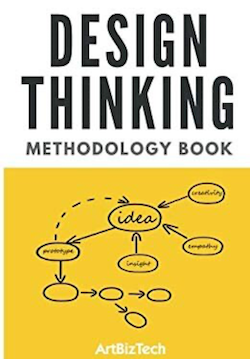
The following illustrates the Design Thinking Methodology:

- The Definition phase scopes the market opportunity with a clear statement that is achievable and measurable. This phase defines a clear focus of what the innovation is all about.
- The Research phase uses techniques such as Personas, Interviews, and Observations to discover the needs and prioritize, especially as relevant to the innovation’s essential focus: Customers.
- The Interpretation phase uses empathy techniques to consider the emotions of the Customers. It also uses techniques such as the Fishbone Diagram to map the cause and effect.
- The Ideation phase involves brainstorming techniques and collaborative sessions to come up with innovative ideas. Prioritization in this phase balances business value with ease of implementation to identify a low hanging fruit.
- The Prototype phase turns the low hanging fruit into demonstrable solution forms. These forms can be used to get immediate and early feedback from the target personas.
- The Evaluation phase tests and refines the prototype(s) through persona feedback and iterations.
Startup Assistant provides comprehensive Design Thinking workshops that capture all the Design Thinking Methodology phases with hands-on exercises for concrete deliverables.
Prioritization
Prioritization is an essential milestone in Ideation. The Startup Assistant approach for Prioritization progresses through the following phases:
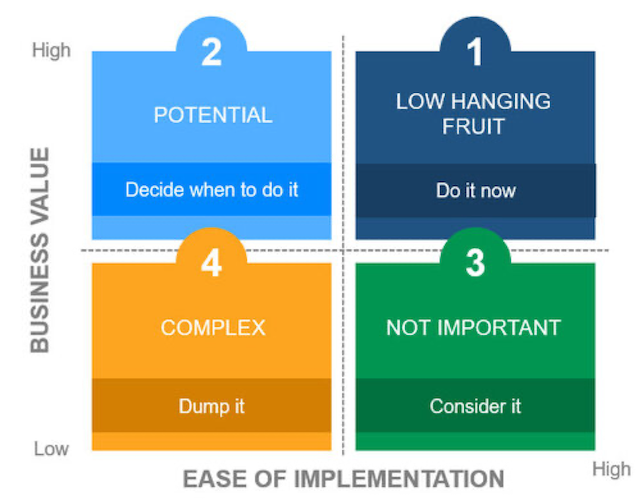
- Specific criteria for Prioritization: This is the ideation phase for Prioritization. The goal is to balance ease of implementation with business value and market penetration.
- Individual Contributor Ideation: Each workshop member comes up with several innovative ideas – a guided “Brain Dump” with the criteria driving their recommendations. The workgroup members must work independently in this phase – without external pressures.
- Consolidated Group Ideation: If there are enough participants, the workshop members are broken into groups for group discussions. Ideally, each group has representation from the different personas. During this phase, the individual ideas are first discussed to see if there are affinities or similarities between the individual recommendations from the previous ideation phase. Typically, there will be clusters with several outliers.
Next, the group will discuss and place the recommendations in four Prioritization groups:
1. Pursue – High Priority: Low Hanging Fruit
2. Potential (a.k.a. Luxury) – Medium Priority: Decide when to do it
3. Support – Medium Priority: Not that important but consider it
4. Avoid – Low Priority: Dump it
Prototype and Evaluation
Once the target low-hanging fruit is identified, it needs to be further refined, prototyped, and evaluated for potential improvement. It then needs to be followed with an actual Minimum Viable Products (MVPs). However, before embarking and developing the MVP leveraging Low Code/No Code platforms, the recommended approach for Prototyping and Evaluation is the related methodology called Design Sprint, whose practice is captured in the book with the same name – by Jake Knapp.
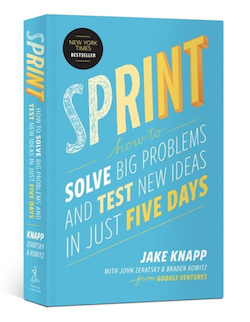
Here is the essence of Design Sprint – for Prototyping and Evaluation (a.k.a. Validation):
“The big idea with the Design Sprint is to build and test a prototype in just five days. You’ll take a small team, clear the schedule for a week, and rapidly progress from problem to tested solution using a proven step-by-step checklist. It’s like fast-forwarding into the future so you can see how customers react before you invest all the time and expense of building a real product.”
The five days of the Design Sprint culminating with Prototyping and Evaluation (a.k.a. Validate):
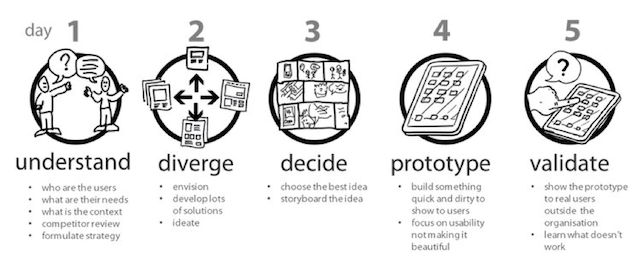
Five days, with all the critical stakeholders, sounds like a lot of effort. It is a serious commitment. However, it is crucial for success. At its core, it is a lean enterprise approach – with the operative word being “lean.” Many startups fail because they lack a rigorous yet robust methodology to come up with and evaluate a prototype.
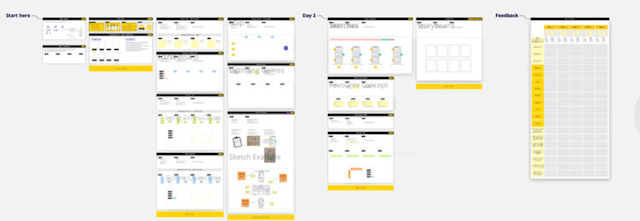
Some tools can significantly assist the collaboration for Design Thinking. For instance, Miro is a powerful and robust visual collaboration and whiteboarding platform that includes the Design Sprint template. Virtual collaboration is particularly relevant in the Covid-19 era. Other tools such as InVision can be used to conduct a mockup of the prototype and subsequently validate or evaluate it with the real users.
In Part 4, we elaborated on the Citizen Developer leveraging Low Code/No Code platforms regarding rapid prototyping and Validation. As noted, there are a plethora of tools with different styles and options:
- Web & Mobile Application Low Code/No Code Platforms
- Business Process Management Low Code/No Code Platforms
- Database Management Low Code/No Code Platforms
- Automated Integration Low Code/No Code Platforms
- Niche Low Code/No Code Platforms: gaming apps, voice apps, vertical apps, etc.
Increasingly instead of “throw-away” mockups, innovative organizations can jump earlier and leverage one or more Low Code/No Code platforms for prototyping and evaluation. The alternative is to follow up with the refinements that invariably result from day five of the Design Sprint methodology. In other words, Design Sprint is followed up with a Low Code/No Code development of the Minimum Viable Product that reflects the “low hanging fruit” – do it now – prerogative with an actual deployed implementation.
Recommendation: Design Thinking Innovation
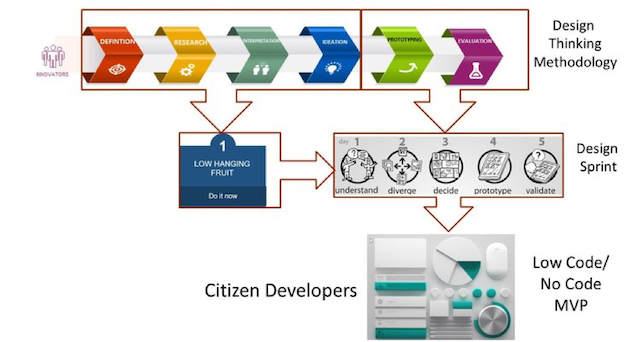
In the post-Covid-19 era, innovation with anti-fragile agility is no longer an option. However, as highlighted above, startups and incumbent enterprises need to adopt three essential best practices:
- Design Thinking: This is the overarching methodology that should be platform or technology-agnostic: Select, implement, and deploy the MVP that corresponds to the low hanging fruit prioritization: Do it now!
- Design Sprint: This five-day Design Sprint approach at the tail of Design Thinking Methodology aligns and realizes the Prototyping and Evaluation phases, corresponding especially to Prototyping and Validation in a Design sprint. The five-day sprint conclusion is, at the very least, a mocked-up version of the Low Hanging Fruit that is the MVP’s predecessor.
- Low Code/No Code Platform Selection: There are now hundreds of Low Code/No Code platforms with a range of capabilities and pricing. Selection is not easy but critical for success. The startup or the enterprise needs to approach the selection objectively and identify the platform that fits best its needs for the MVP.
- MVP Implementation and Deployment: This is the ultimate objective of Design Thinking – and the beginning of the iterations for continuous improvement and market penetration.
This is a ten-part article series centered around Digital Transformation Debts in the wake of the Covid-19 pandemic. Be sure to check out all ten articles!
